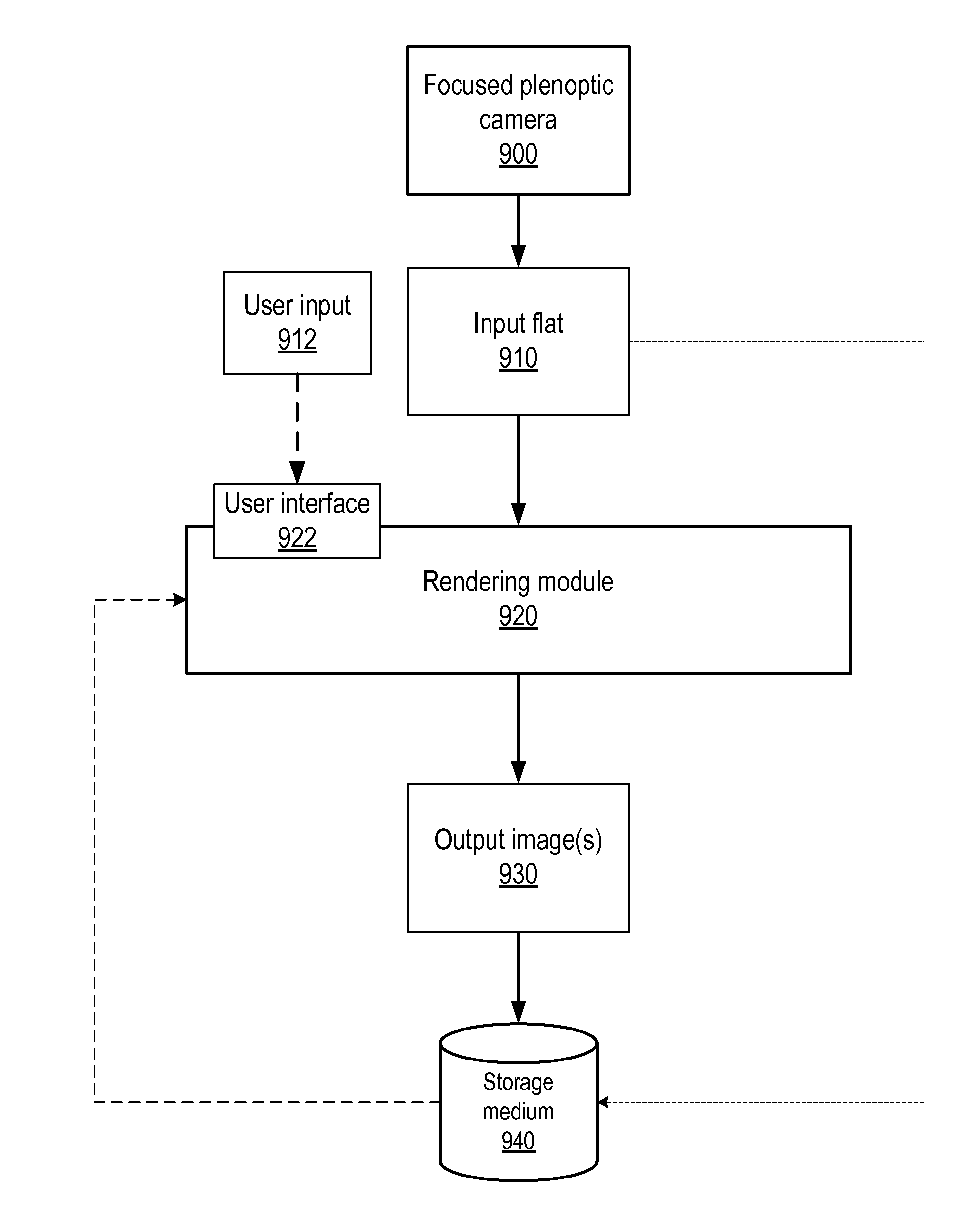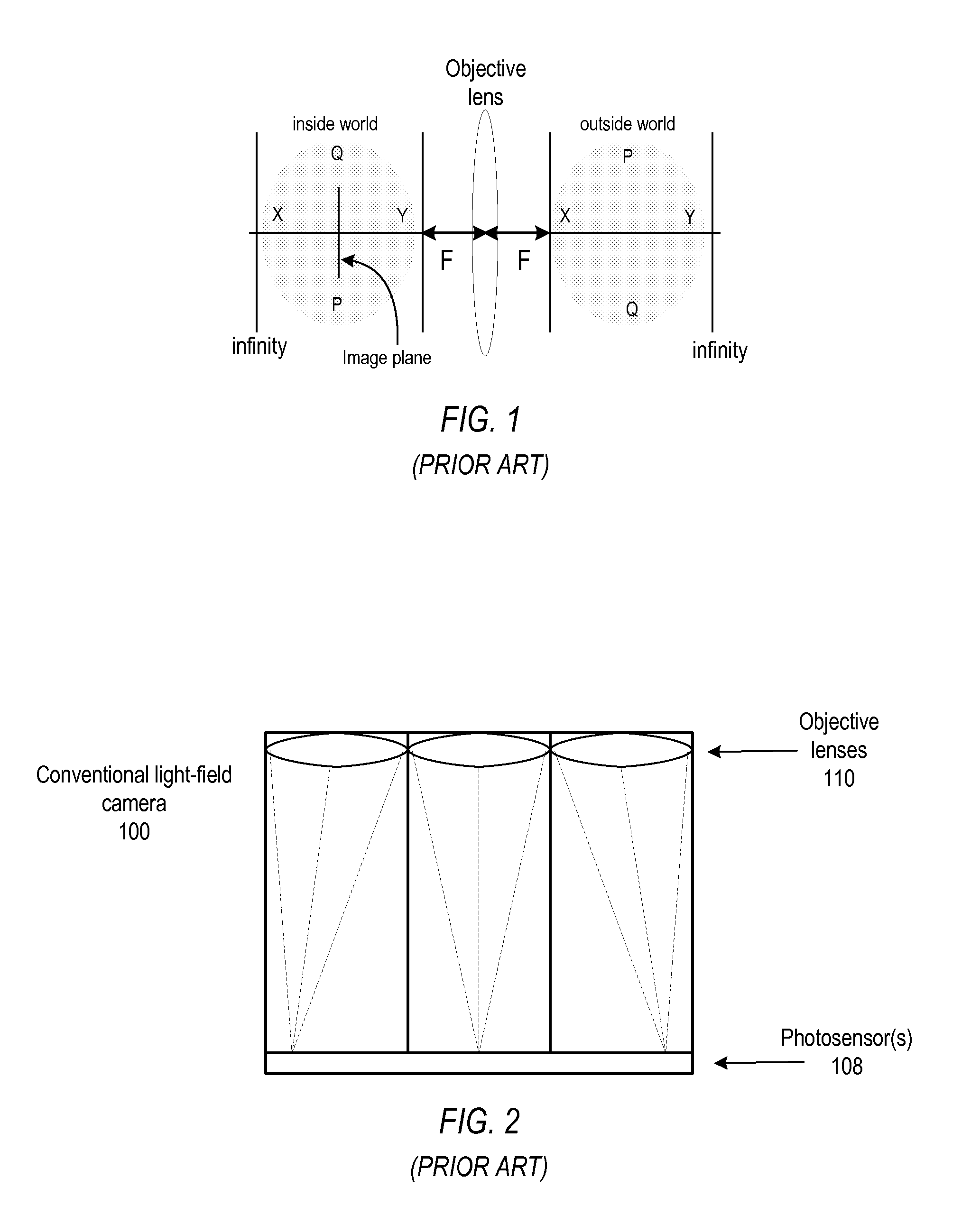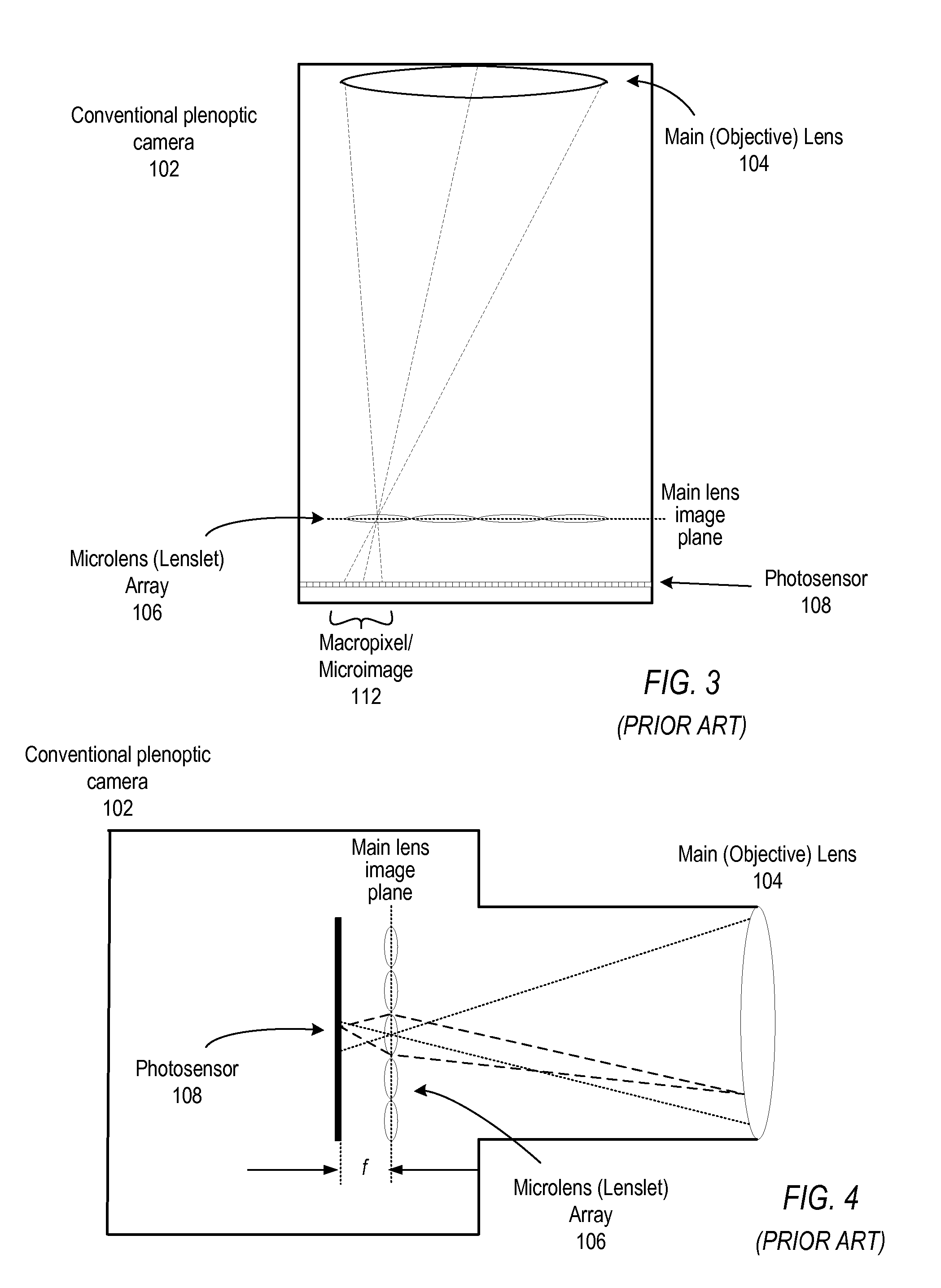Methods and Apparatus for Reducing Plenoptic Camera Artifacts
a technology of artifact reduction and plenoptic camera, which is applied in the direction of color television details, instruments, television systems, etc., can solve the problems of reducing the quality of the image, and reducing the artifact significantly. , the effect of reducing the artifa
- Summary
- Abstract
- Description
- Claims
- Application Information
AI Technical Summary
Benefits of technology
Problems solved by technology
Method used
Image
Examples
example results
[0189]The section Example focused plenoptic camera implementation introduced an example implementation of a focused plenoptic camera. For the example focused plenoptic camera implementation, a medium format camera, using an 80-mm lens and a 39-megapixel digital back, is used. Pixel size is 6.8 μm. The lens is mounted on the camera with a 13 mm extension tube, which provides the needed spacing to establish an appropriate distance from the focal plane to the microlens array and the sensor. The rationale for the extension as a way of reducing artifacts was described in the above-noted section. In the example focused plenoptic camera, the microlens array works with the sensor without removing the cover glass. For that purpose, the microlenses have focal length of 1.5 mm and the array is placed directly on the cover glass of the sensor, after removing the infrared filter. The microlenses are spaced 0.5 mm apart. With this configuration, the microlens array matches a main lens F-number as...
PUM
 Login to View More
Login to View More Abstract
Description
Claims
Application Information
 Login to View More
Login to View More - R&D
- Intellectual Property
- Life Sciences
- Materials
- Tech Scout
- Unparalleled Data Quality
- Higher Quality Content
- 60% Fewer Hallucinations
Browse by: Latest US Patents, China's latest patents, Technical Efficacy Thesaurus, Application Domain, Technology Topic, Popular Technical Reports.
© 2025 PatSnap. All rights reserved.Legal|Privacy policy|Modern Slavery Act Transparency Statement|Sitemap|About US| Contact US: help@patsnap.com



